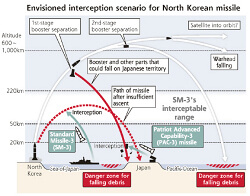[自然]淘汰
The lead editorial in the Nikkei today carries the headline “Use stringent criteria for public assistance to [private] corporations”:
Public-sector assistance for powerhouse corporations is getting mobilized. The government has determined that it will attach government insurance to the loans provided by the Development Bank of Japan to Japan Airlines. It is forecasted that within the month syndicated loans on a scale of JPY 100 billion will also be executed. Public assistance for Elpida Memory and Pioneer, among others, is also being looked into among relevant parties.
The grounds for legitimizing Tokyo’s embarking on assistance for corporations are that it’s a response to a crisis. In the economically sluggish environment that surrounds them, if the operations of powerhouse corporations are impeded, many and great effects on the Japanese economy and on the daily lives of citizens will manifest themselves. The thinking goes that government intervention, taken as an emergency measure to forestall those effects, is justified.
Casting an eye abroad, we see that the U.S. government has infused General Motors with approximately JPY 5 trillion of public funding to assist its reconstruction. In Europe and the Americas as well, Opel in Germany and other enterprises have taken public loans. Since the financial crisis of last fall, the nature of the relationship between private and public has changed, and now corporate relief from the government is not all that rare.
However, the premise of the operations of private enterprise is responsibility for itself, and the brakes need to be applied hard to government assistance. If it gets to the point that “any old corporation can get a government bail-out,” then inevitably we’ll be asking for slackness in business operations. The metabolic process—restructuring, attrition [of moribund organizations], and appearance of new entrants—will not go forward, and it will produce a decline in industrial activity.
…
An industrial policy of protecting the weak is not something that is desirable. In industries such as electronics, in which it has been indicated that the number of players is too high, moving forward with restructuring and attrition, not with bailing out individual enterprises, will lead to the robustness of the industry as a whole. Even if a powerhouse enterprise topples, if new entrants come to life, the markets will take on their own vigor, and employment will also emerge.
Compared to some time ago, the financial markets are in the process of recovering their stability. We should pile prudence on prudence when it comes to setting in motion government assistance, which cannot be guaranteed not to cause distortions in competition.
The word I’ve (loosely) translated “attrition” above is the selection part in the Japanese equivalent of natural selection (自然淘汰). Of course, the relationship between government and private industry (especially “powerhouse corporations”) has been much closer in Japan than it’s conventionally been in the States. And the Japanese have now had nearly two decades of experience with zombie corporations and painful economic dislocations.
Added later: ReasonTV has turned Anthony Randazzo et al’s recent study into an episode.
Added on 24 June: You’d think I’d be able to distinguish between JAL (my airline!) and ANA, but I mistyped above; it’s corrected now.
